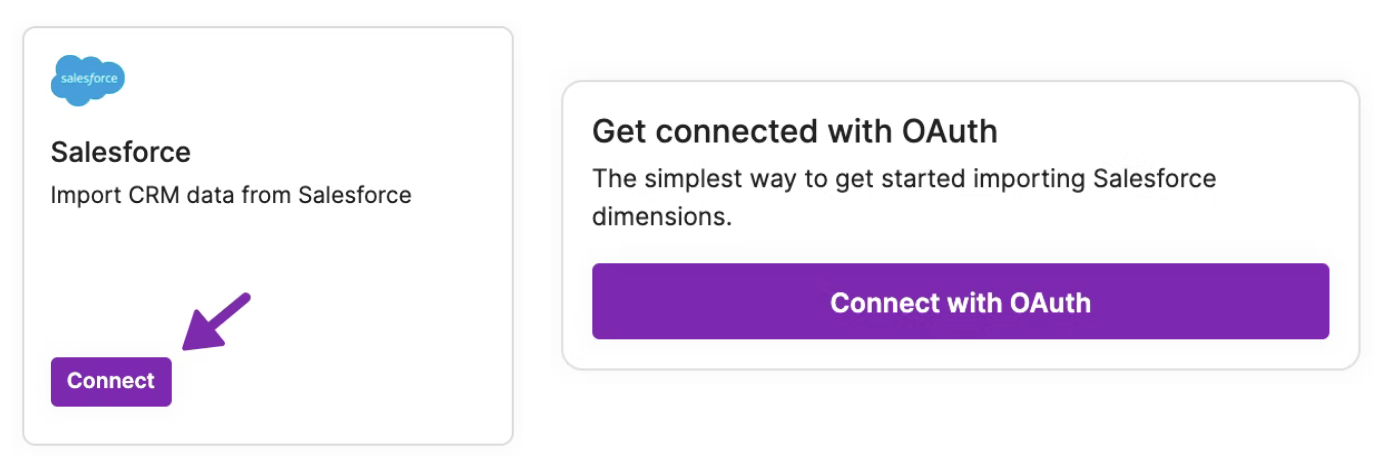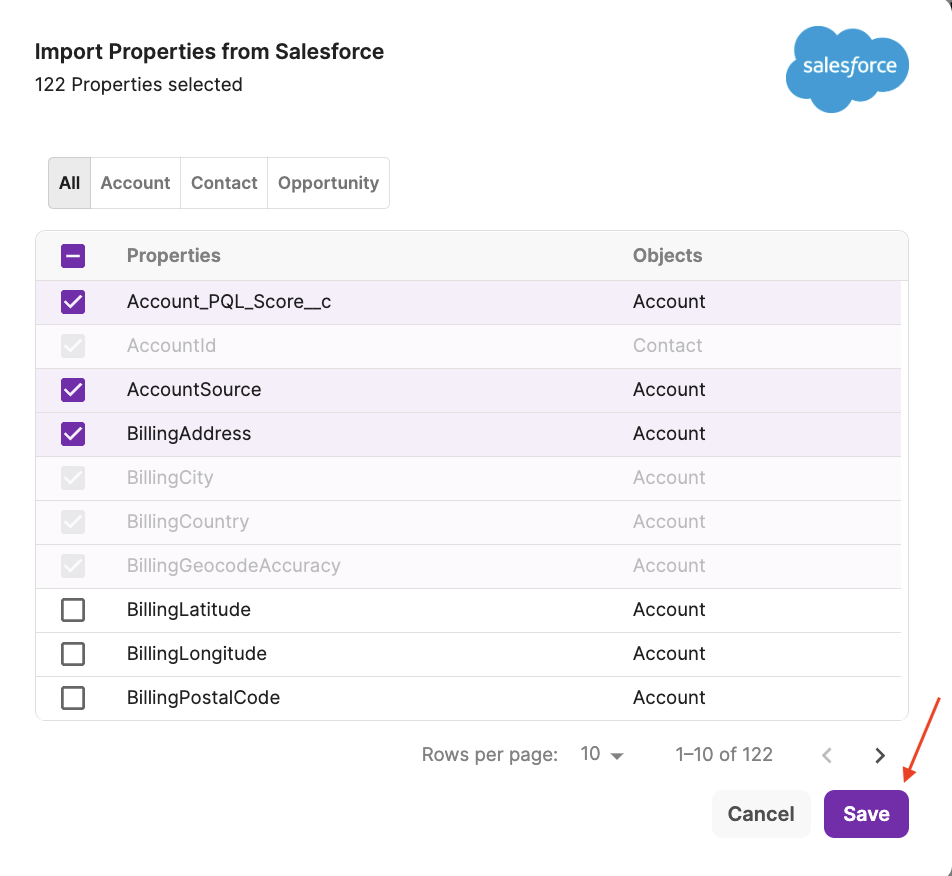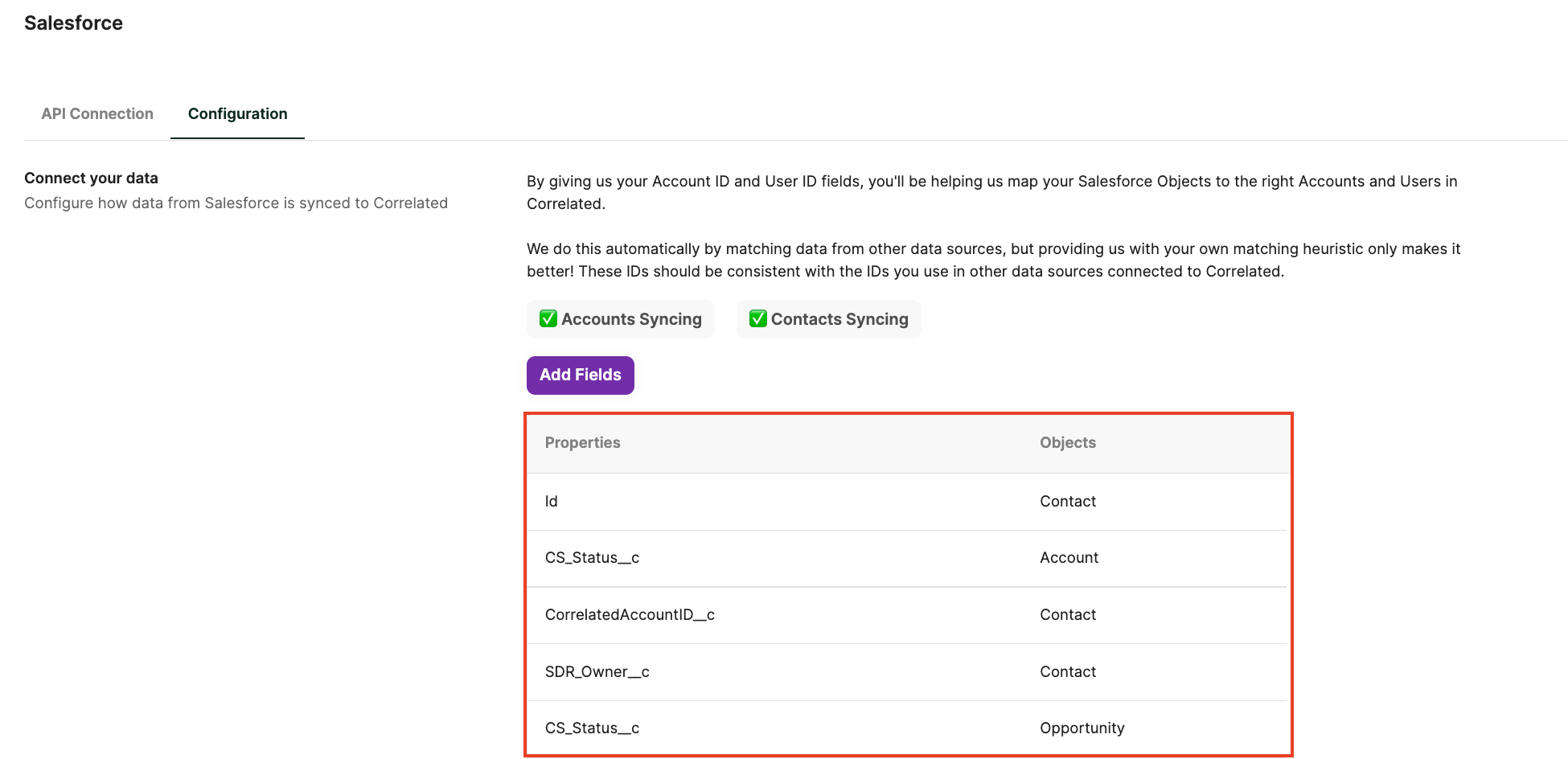Salesforce Integration
Salesforce is a commonly used CRM platform. Revenue teams store all of their contextual data on customer interactions in Salesforce. However, this contextual data is hard to analyze alongside product usage metrics that live in other systems. Correlated makes it easy to combine your customer data in Salesforce with other data sources so that you can view how your customers are doing on an account basis.
Before You Get Started
Your permissions in Salesforce will impact what data you can access in Correlated. When we use your account to connect to Salesforce, we will only be able to see the data that you are allowed to see. As a result, we would suggest connecting to Salesforce using an account that has admin privileges.
Please also note that your Salesforce account cannot be a trial account in order to integrate with Correlated.
Salesforce API Calls
Correlated will make API calls on your behalf, which will use your rate limits. We do our best not to use them wastefully, and we’ll stop using API calls if we’re within 90% of the max. The rate limit refreshes every day, so if we aren’t able to pull data due to being rate limited, we’ll just pick up where we left off when the limit is refreshed! For Salesforce Task creation, Correlated makes one request per task.
Correlated pulls objects from SFDC in batches of 500, and will only pull objects where the LastUpdated timestamp is after the last time a fetch began. It depends on the amount of objects you have, and how often they change, but for most customers this is in the range of a few hundred calls per day.
Getting Started
- Log into the Correlated application.
- Click on Integrations in the left navigation.
- Click "Connect" on the Salesforce card and then "Connect with OAuth" - you will be redirected to Salesforce to authenticate and authorize our application.

Configuring Your Integration
Once you've connected Salesforce, you'll want to tell Correlated what fields matter to you. This is important as you only want to surface fields that you think are valuable to the team using Correlated.
- Click on Integrations in the left navigation.
- "Edit" the Salesforce Integration.

- Select the "Configuration" tab. In order to help Correlated map your Salesforce objects to the right Accounts and Users, you'll need to give us your Account ID and User ID fields.
Note: These IDs should be consistent with the IDs you use in other data sources connected to Correlated. - Click "Connect Accounts" and select the proper Account ID field.
- Click "Connect Contacts" and select the proper User ID field. You'll be prompted to add the Account ID here as well, but this step is optional.

Importing Properties from Salesforce
- Now that you've configured Salesforce properly, click "Add Fields" to import the fields you want to access in Correlated.

- When you select fields to bring over, these will become available as Dimensions in Correlated, and can be used to build Playbooks or customize Account/User Lists.
- When you're done selecting fields, click "Save."

- Once fields are added, we'll list the Property name and what Object it comes from below.
Note: You can come back to the integration and add additional fields at any time!

Updated almost 3 years ago
